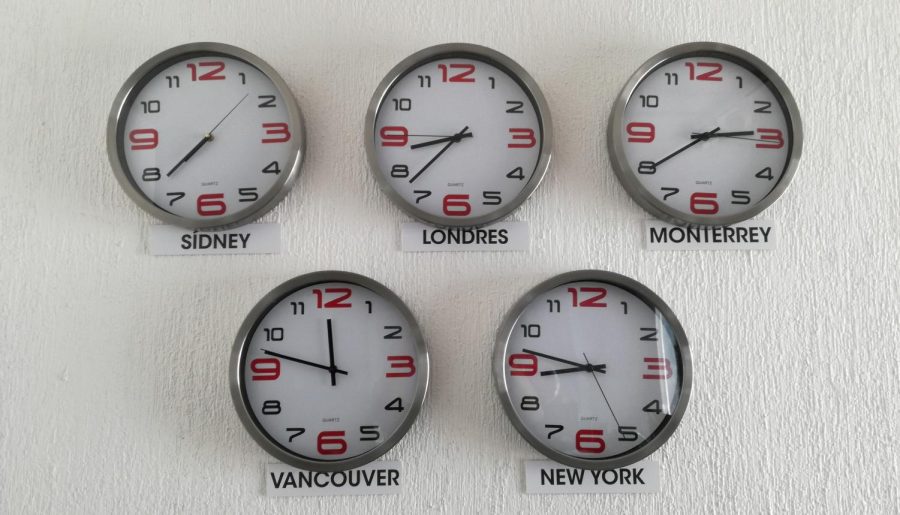Time zones can sometimes be confusing
Photo by Luis Cortes on Unsplash
Standardized time is accepted around the world.
It’s the last few months of the year. Leaves are falling off trees, winds are starting to pick up, and the sun is setting sooner than usual. However, in some other parts of the world, people are in a completely different time zone, enjoying spring temperatures and fresh growth.
When it’s morning here in the United States, it’tims nighttime on the other side of the world. When it is 9 am in California, people in New York are sitting down to a lunch and it’s the 3 am tomorrow in Australia. All of this is organized and determined by time zones, but how did it all start?
Sir Sanford Fleming. was a Canadian engineer, and was the first person to discover and propose the use of the worldwide time zones back in 1878. Time zones are a geographic region within which the same standard time is used, according to Merriam-Webster. There are a total of 24 time zones across the entire world and they are separated by longitude and each line of longitude Is divided by fifteen degrees. Depending on which way one travels, time moves forward or backward one hour for every fifteen degrees of longitude.
There are four main time zones In the US: Pacific, Mountain, Central, and Eastern. While China is about the same size, however, they have chosen to have only a single time zone, which means that darkness comes earlier to the eastern side than the western side, although the clock reads the same across the country.
The reason for time zones is that the local time of places on different meridians are going to be different sometimes, so it’s helpful to have a standard time for a country. We have so many because as the earth rotates on the axis, it moves fifteen degrees every hour, and after 24 hours it has completed a 360 degree rotation. Scientists have used this information to divide the globe into 24 sections / time zones, as explained by Wonderopolis.org.
If the world didn’t have any time zones, we would be more in tune with our circadian rhythms, because time would be determined by the sun, but it would not be consistent with time in general. Time zones add a level of convenience to standardize the use of time and helps set up work and school schedules based on daylight hours.
Interested in moving or visiting somewhere with a completely different time zone? Adapting should be easy. Adjusting to a new sleeping schedule can be challenging, but drinking plenty of water and avoiding caffeine and sugar for a short time will help. In addition, using the traditional time locally to eat and sleep will eventually lead to the body’s acceptance.

Hi, it's Gaby! I was born and raised in Vallejo before moving here 7 years ago. I’m a senior here and I think that being in journalism is very comforting,...



